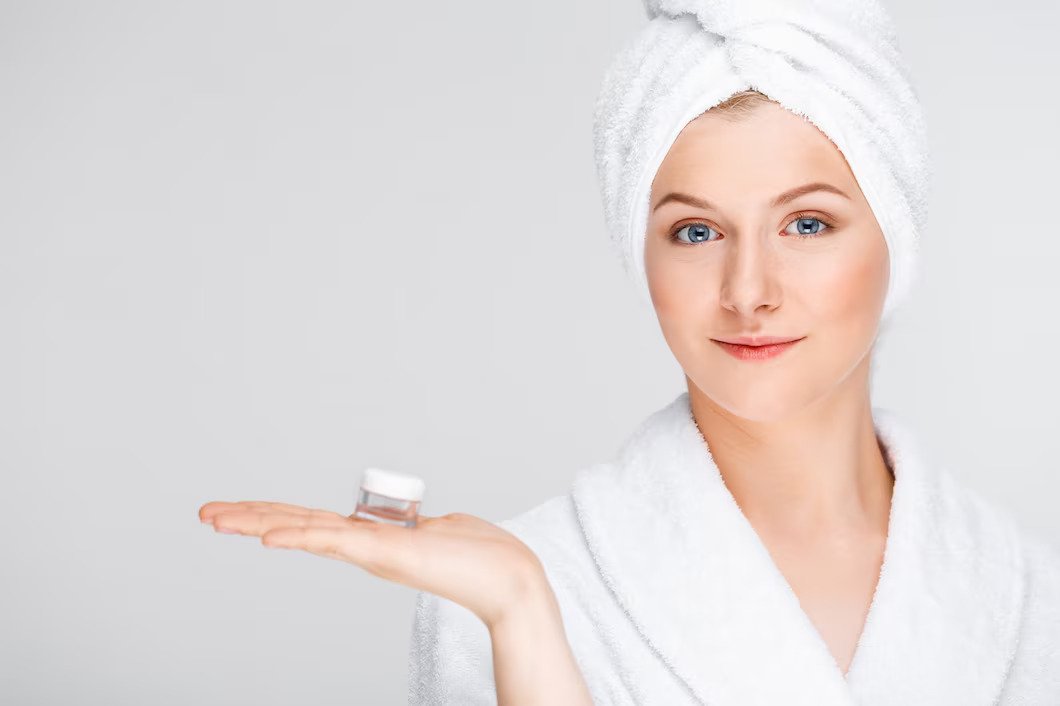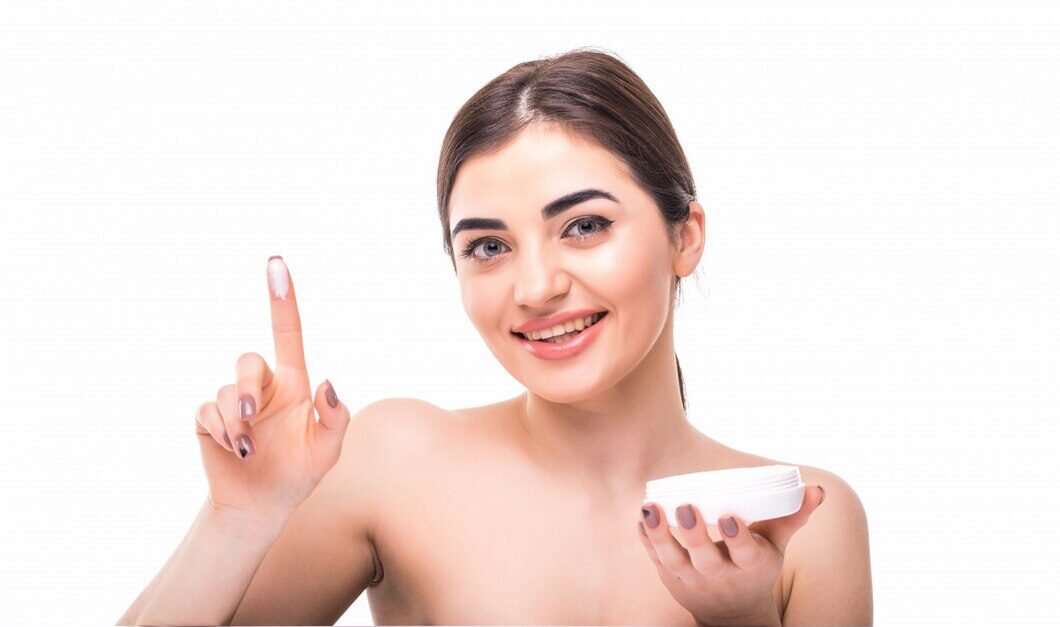Unlocking Radiance: The Science Behind Skin Whitening Creams
- 1 The Search for Fair Skin: A Historical Analysis\
- 2 The Science of Skin Whitening
- 3 Typical Substances in Skin Whitening Creams
- 3.1 Kojic Acid
- 3.2 Glycolic Acid
- 3.3 Niacinamide
- 3.4 Licorice Extract
- 4 Safety Considerations
- 4.1 Skin Irritation
- 4.2 Concerns about Hydroquinone
- 4.3 Allergic Reactions
- 4.4 Sun Sensitivity
- 4.5 Long-Term Safety
- 5 How Whitening Creams are Working?
- 5.1 Vitamin C: For Brightening Skin
- 5.2 Glycolic Acid is for Exfoliation
- 5.3 Kojic Acid is a Melanin Inhibitor
- 6 Conclusion
Many people in today’s beauty-conscious society want skin that is clear, luminous, and even in tone. Skin whitening creams, a class of cosmetics that claim to lighten the skin, lessen hyperpigmentation, and enhance overall complexion, have grown increasingly popular as a result of this desire. However, the research underlying these creams is sometimes muddled or clouded by debate. We will go further into the realm of skin whitening creams in this extensive post, learning about their components, modes of action, safety issues, and cultural implications of their use.
The Search for Fair Skin: A Historical Analysis\
The worldwide yearning for fairer or lighter skin has been going on for ages. Fair complexion has historically been linked to prosperity, position, and attractiveness. Various natural chemicals and therapies for skin whitening were developed as a result of this viewpoint and are now used in many cultures.
Ancient Customs
The ancient Egyptians utilized milk and honey as skin care products. Ingredients with skin-brightening effects were used in Asia, including rice bran and turmeric.
Medieval Europe
In medieval Europe, being pale was highly prized, reflecting a way of life that kept people indoors and out of the sun. To acquire the ideal fair complexion, aristocrats employed treatments containing lead, which had serious health effects.
19th and 20th Centuries
With the development of the cosmetics business, skin-whitening creams using mercury and hydroquinone became popular. While these medications varied in their effectiveness, they presented serious health hazards.
The Science of Skin Whitening
The pigment that gives skin, hair, and eye color is melanin, and skin whitening lotions operate by preventing its formation. The primary mechanisms and components involved in skin whitening are broken down as follows:
Tyrosinase Inhibition
The tyrosinase activity-inhibiting chemicals hydroquinone, kojic acid, and arbutin are found in several skin-whitening lotions.
Exfoliation
AHAs and BHAs, two types of exfoliating substances, are present in several skin-whitening solutions.
Anti-Inflammatory Agents
Substances with anti-inflammatory characteristics, such as licorice extract and niacinamide, can help lessen skin redness and inflammation brought on by conditions like acne or sun exposure. This may indirectly result in a skin tone that is more even.
Sunscreen
UV rays are a significant catalyst for the synthesis of melanin. Sunscreens are frequently included in skin-whitening lotions to shield the skin from UV rays and preserve the results of the lightening process.
Typical Substances in Skin Whitening Creams

A wide variety of natural and artificial substances are sometimes included in skin-whitening cream. The most typical ones and how they affect skin lightening are listed below:
One of the most powerful substances for skin whitening is hydroquinone. It can significantly lighten dark spots and hyperpigmentation while inhibiting tyrosinase activity. However, because of worries about long-term safety, it has been prohibited or limited in several nations.
Kojic Acid
A naturally occurring inhibitor of melanin synthesis, kojic acid is derived from fungi. It can lessen the visibility of black spots and is frequently used in skin-whitening solutions.
Glycolic Acid
Glycolic acid, an AHA, exfoliates the skin and can enhance its radiance and texture. It is frequently utilized in chemical peels and skin-whitening solutions that exfoliate the skin.
Niacinamide
Niacinamide, also known as vitamin B3, has anti-inflammatory qualities and can help to lighten and even out skin tone.
Licorice Extract
Tyrosinase inhibitors and anti-inflammatory agents can both be found in licorice root extract. It can calm inflamed skin and lessen the visibility of black spots.
Safety Considerations
Safety considerations include:
Skin Irritation
Some compounds for skin whitening, particularly AHAs and BHAs, can irritate the skin and cause it to become red and peel. For the skin’s protection, it’s crucial to adhere to product directions and wear sunscreen while receiving therapy.
Concerns about Hydroquinone
When taken in high doses or for a long time, hydroquinone has been linked to negative effects. Ochronosis, a blue-black staining, and worries about possible carcinogenicity are a few examples of these impacts.
Allergic Reactions
Some people may have skin rashes, itching, or swelling after using skin-whitening treatments that include certain substances.
Sun Sensitivity
The skin’s sensitivity to UV radiation can be increased by exfoliating chemicals and some skin-whitening substances. To prevent sunburn and additional skin deterioration, sunscreen use is crucial.
Long-Term Safety
These concerns include the possibility of skin thinning or rebound hyperpigmentation after stopping use.
Before utilizing skin whitening solutions, it’s crucial to speak with a dermatologist or other healthcare provider, especially if you have any skin disorders or concerns already.
How Whitening Creams are Working?
These creams are working to provide a fresh look to your skin. Ingredients like vitamin C, glycolic acid, kojic acid, licorice, and hyaluronic acid are very beneficial for the fresh look. They help in collagen building, reducing pigmentation and dark spots.
Vitamin C: For Brightening Skin
Vitamin C is, ascorbic acid, very beneficial to the skin. It has antioxidant which fights to reduce dark scripts, melanin, and hyperpigmentation. It also helps to build collagen, producing collagen, which helps to reduce the effects of skin aging.
Glycolic Acid is for Exfoliation
With time, your skin gains extra skin, which reduces the shinning of the skin. It makes your skin very dull and you look unhealthy. By using glycolic acid, the skin will be able to exfoliate, and dirt and unhealthy skin will be removed from your face. It will give fresh looks to your skin, boosting your confidence.
Kojic Acid is a Melanin Inhibitor
It is made to slow down the process of melanin. It inhibits tyrosinase, which inhibits the production of melanin. Melanin, on your skin, produces dots and an extra dark layer, which reduces your skin’s freshness and shinning
Conclusion
Nurturing a healthier and more inclusive beauty culture requires encouraging acceptance of various skin tones and nurturing a good self-image. Many people in today’s beauty-conscious society want skin that is clear, luminous, and even in tone. Skin whitening creams, a class of cosmetics that claim to lighten the skin, lessen hyperpigmentation, and enhance overall complexion, have grown increasingly popular as a result of this desire. However, the research underlying these creams is sometimes muddled or clouded by debate.















